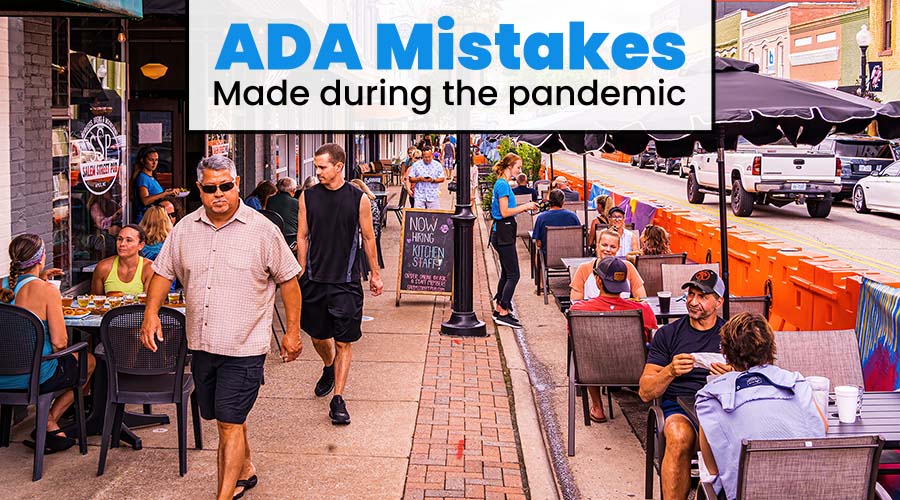During the COVID-19 pandemic, facility managers have added new products and procedures to their buildings to enhance safety and curb the spread of the coronavirus. Hand sanitizer stands, temperature scanning kiosks and other additions have been placed in entryways and affixed to hallway walls. While this has helped facilities remain or reopen, unfortunately, these measures may have also violated ADA regulations.
The Americans with Disabilities Act (ADA) is a federal civil rights law that is complaint driven. Unlike building codes, the ADA is enforced either through investigations performed by the U.S. Department of Justice or by the federal courts; both stemming from complaints or allegations received from individuals with disabilities.
In this 4-part video series, Joan Stein — who has more than 30 years of experience as an ADA consultant — explains some of the common mistakes made during the pandemic, answers frequently asked questions, and provides best practices for correcting ADA compliance errors.
• Part 1: ADA Mistakes Made During the Pandemic: (5 minutes)
• Part 2: What is ADA and What Facilities Must Comply? (10 minutes)
• Part 3: ADA Best Practices and Tips (10 minutes)
• Part 4: Common ADA Questions and Errors (10 minutes)
Here’s a preview:
When people make changes to their facility, to their infrastructure, you need to be extremely careful that you are not undoing good things that were already in place. The ADA as a civil rights law protects people with disabilities. Part of that protection is creating a physical environment that provides accommodations that provide space and clear widths and so forth.
Unfortunately what happened during the pandemic is people said, “oh we have a sidewalk. We can serve people on the sidewalk.” And then they just put tables and chairs out on the sidewalk. Not only can you not get by in a wheelchair, you can't get by walking. You wind up doing the sideways walk and hope that you don't knock their silverware or their plates off their table. So that's not good.
Here are a couple examples. This one here, literally you can't walk. And then, of course, we must have planters. I love flowers, but it's an obstacle. It's a barrier. This picture on the right is a local strip mall and not only did Jimmy john's put their tables out, but then the property owner already had the stanchion on the handicapped parking side. So, of course, those who parked there, you get out of your car, but you can't get to the sidewalk to get into the store. Think about it. It’s not good. Here we have lovely seating with beautiful umbrellas, except you have to climb the steps to get up to it.





